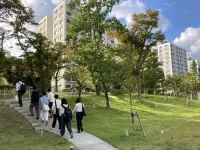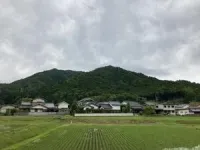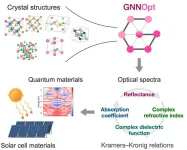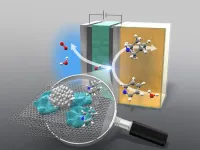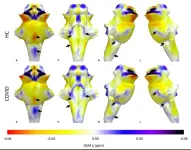(Press-News.org) Although access to nature is a basic human right, people’s actual use of green spaces is subject to inequalities. A Kobe University-led research team analyzed what conditions make it more likely that people are exposed to nature across generations: the availability of green spaces around where they live, work and shop, as well as nature relatedness and past natural experiences. Their findings may inform policies for urban planning and education for the improvement of human health.
Visiting green spaces is good for people’s health, both psychologically and physiologically. However, how often people use green spaces is not equal and has been the topic of discussion in the fields of urban planning and regional governance. Research has focused mainly on the availability of green spaces around residential areas and the connection with socioeconomic factors. The Kobe University human environmental scientist UCHIYAMA Yuta explains, “Even though the access to quality natural environments is a basic human right, it tends to be treated as low-priority issue because policy makers think that it can be addressed indirectly through economic growth.”
Uchiyama and his team thus conducted a survey in the two largest metro areas of Japan, the Kanto region around Tokyo and the Kansai region including Osaka, Kyoto and Kobe. In the survey, they asked 3,500 people about how often and where they visit green spaces as well as where they live, work, and shop, basic socioeconomic factors such as age, gender and household income, and about their nature relatedness and the availability of free time. In addition, they used publicly available geographic data to correlate the collected responses with the size and shape of green spaces around the respondents’ daily environments. The Kobe University lead author says: “I felt the need to focus on daily life in general because of my personal experience. Both now and in my childhood, encountering plants and animals (even wild boars on campus) on my way to work, school, or shopping lets me feel the seasons and forget my daily life for a moment. Thus, an integrated understanding of these various aspects is necessary.”
Their results, published in the Journal of Environmental Management, show that people use green spaces more if they are available throughout their daily environments, not just around where they live. The Kobe University researcher says: “This result can be used as evidence for policy making, especially in the fields of environmental management and urban planning, as there is potential for the utility of green spaces not only around residential areas but throughout people’s daily environments.” The results also showed that another very consistent factor driving visits to nature is people’s childhood nature experience and nature relatedness, and that nature relatedness was stronger the older the respondents were. “This shows how important effective environmental education for all generations is,” says Uchiyama.
However, the baseline for such policies is different in monsoon Asia compared to urban areas in North America and Europe. Uchiyama explains, “Cities in East and Southeast Asia are more mixed with rural areas than those in Europe and North America; in other words, the distance between urban and rural areas is closer, and there is no clear division between them.” In Japan, such a complex landscape is called “satoyama landscape,” and it is still a typical sight in the outskirts of metropoles such as Tokyo and Osaka. In fact, the results of Uchiyama’s research also show that being close to agricultural land and green spaces with complex shapes correlates well with the frequency of people’s use of green spaces, indicating the importance of these landscapes.
The human environmental scientist has his eyes on the larger picture: “In our ongoing research, we are focusing also on health outcomes which correlate with nature visits and we use big data approaches such as mobile phone GPS data to trace where and for how long people are actually exposed to green spaces. In the end, I would like for our research to contribute to policies reducing the unequal access to nature, which we believe is a root cause of other social and environmental issues. After all, access to nature is a basic human right.”
This research was funded by the Japan Society for the Promotion of Science (grants 22H03813 and 23H03605) and the Ministry of the Environment, Japan (grant 1FS-2201). It was conducted in collaboration with researchers from the University of the Ryukyus, Meio University and Kyoto University.
Kobe University is a national university with roots dating back to the Kobe Commercial School founded in 1902. It is now one of Japan’s leading comprehensive research universities with nearly 16,000 students and nearly 1,700 faculty in 10 faculties and schools and 15 graduate schools. Combining the social and natural sciences to cultivate leaders with an interdisciplinary perspective, Kobe University creates knowledge and fosters innovation to address society’s challenges.
END
Increase access to nature in all daily environments and in education
2024-10-08
ELSE PRESS RELEASES FROM THIS DATE:
AI speeds up the discovery of energy and quantum materials.
2024-10-08
Researchers from Tohoku University and the Massachusetts Institute of Technology (MIT) have unveiled a new AI tool for high-quality optical spectra with the same accuracy as quantum simulations, but working a million times faster, potentially accelerating the development of photovoltaic and quantum materials.
Understanding the optical properties of materials is essential for developing optoelectronic devices, such as LEDs, solar cells, photodetectors, and photonic integrated circuits. These devices are pivotal in the semiconductor industry's current resurgence.
Traditional means of calculation using the basic laws of physics involve complex ...
An efficient way to hydrogenate nitrogen-containing aromatic compounds has been developed
2024-10-08
Successful reduction of the chemical manufacturing industry’s environmental impact relies on finding a greener way to make the chemical building blocks for common and massively consumed compounds.
It’s no secret manufacturing processes have some of the most impactful and intense effects on the environment, with the chemical manufacturing industry topping the charts for both energy consumption and emissions output. While this makes sense thanks to the grand scale in which manufactured chemicals are involved in daily life, it still leaves a lot to be desired for sustainability’s sake. By focusing on renewable energy sources and alternative methods for creating the ...
Study finds common breast cancer treatments may speed aging process
2024-10-08
A new study led by investigators at the UCLA Health Jonsson Comprehensive Cancer Center has revealed that common breast cancer treatments, including chemotherapy, radiation, and surgery, may accelerate the biological aging process in breast cancer survivors.
The findings, published in the Journal of the National Cancer Institute, show that markers of cellular aging—such as DNA damage response, cellular senescence, and inflammatory pathways—significantly increased in all breast cancer survivors, regardless of the type of treatment received. This suggests that the impact of breast cancer treatments ...
Ultra-powered MRI scans show damage to brain’s ‘control center’ is behind long-lasting Covid-19 symptoms
2024-10-07
Damage to the brainstem – the brain’s ‘control centre’ – is behind long-lasting physical and psychiatric effects of severe Covid-19 infection, a study suggests.
Using ultra-high-resolution scanners that can see the living brain in fine detail, researchers from the Universities of Cambridge and Oxford were able to observe the damaging effects Covid-19 can have on the brain.
The study team scanned the brains of 30 people who had been admitted to hospital with severe Covid-19 early in the pandemic, ...
Despite progress, China remains tethered to coal as climate change pressures mount
2024-10-07
A new paper from the University of California San Diego details how China faces numerous political, economic and technological obstacles as it tries to transition away from coal—the country’s primary energy source—while balancing the need to combat climate change with the need for energy security.
Despite its commitment to "phase down" coal, China recently has been permitting and constructing coal plants at rates not seen in a decade.
“There is an increased focus on energy security in China—in 2021, the country experienced its worst power outages in decades, affecting ...
Open Call: Journalists in Residence Program at Institute of Science and Technology Austria (ISTA)
2024-10-07
The Institute of Science and Technology Austria (ISTA) is a PhD-granting research institute near Vienna. It was founded in 2009, with the bold ambition of providing the best possible environment to conduct innovative frontier research. It is dedicated to transcending traditional boundaries of disciplines, cutting-edge infrastructure, training the next generation of scientific leaders, and increasing the impact of science through science engagement as well as technology transfer. It is home to 82 research groups across all fields, ...
Small creatures, big impact
2024-10-07
Could the butterfly effect - in which a small change in one state of a system can result in large differences in a later state - also apply to the earth’s oceans, as well as its skies?
Some species of zooplankton are on the order of one millimeter, but don’t let their size fool you. It’s possible these small creatures can create quite a wave.
While it’s long been understood that large marine animals, like fish or whales, can stir up the ocean’s water columns, the impact ...
Researcher receives grant to enhance quantum machine learning education
2024-10-07
At a time when data are doubling every two years, the U.S. is projected to create over 40 billion gigabytes of data by 2025. To prepare for the influx, Kennesaw State University associate professor Yong Shi, an expert in quantum machine learning (QML), aims to unlock insights from the data surge and educate future QML researchers.
Shi, along with colleagues Dan Lo, professor of computer science, and Luisa Nino, assistant professor of industrial and systems engineering, recently secured a National Science Foundation (NSF) grant to develop open-source, hands-on QML training materials ...
Professor gives American grading system an F
2024-10-07
OXFORD, Miss. – America’s obsession with grades is failing students and jeopardizing the future of education, a University of Mississippi professor argues in his new book.
Josh Eyler, director of the Center for Excellence in Teaching and Learning, recently released “Failing Our Future: How Grades Harm Students, and What We Can Do About It” (Johns Hopkins University Press), in which he argues that the traditional system of grading is harmful to students.
“This book looks at the issues with grades in learning, the kinds of Issues grades ...
NIH awards $2.2 million to UMass Amherst to explore new tuberculosis therapies
2024-10-07
AMHERST, Mass. – The National Institutes of Health recently awarded $2.2 million to Alissa Rothchild, assistant professor in the Department of Veterinary and Animal Sciences at the University of Massachusetts Amherst and an expert in tuberculosis (TB) immunology, to study the very first cells that respond to Mycobacterium tuberculosis (Mtb), the bacteria causing TB.
How those initial cells, known as alveolar macrophages, or AMs, respond to the bacteria is not entirely known, though Rothchild and her lab have shown in a previous study that AMs don’t respond to Mtb infection the way other macrophages do. Instead of mounting a strong inflammatory response, AMs turn on a cell-protective ...
